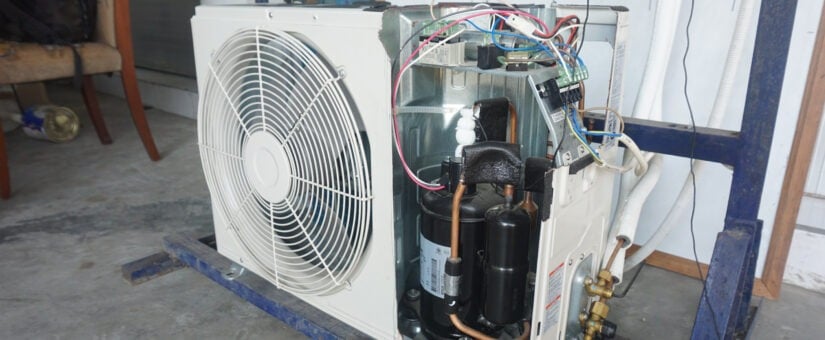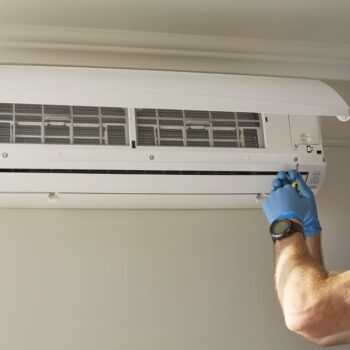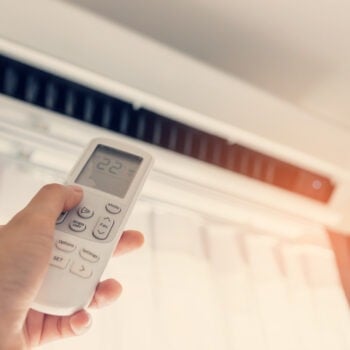
- On October 6, 2021
What You’ll Learn
As you read about the individual HVAC components within your system, you’ll learn:
- There are several key parts of an HVAC system to learn about.
- Even if you can’t repair or replace the parts yourself, knowing about the various HVAC components will make you feel more confident when you call for service.
Key HVAC Components
An essential part of what makes your home comfortable is the HVAC unit, but most people are less familiar with their units than they should be. The HVAC unit is composed of multiple parts which form the system. It is important to understand the function of these individual components. Being familiar with them will aid in knowing when the system is functioning properly, when something may be wrong, and when to call a professional to assist you with all of your HVAC needs.
1 – Thermostat
The thermostat is the most recognizable feature of the HVAC system. Located in your home on an easily accessible location on a wall. The thermostat controls the temperature of your home. It may be set automatically or adjusted manually to the optimal temperature. The thermostat can be used to activate either the heating system or the cooling system in your home. When the heat is selected, the thermostat will signal the heat exchange to begin pulling in air to be heated. When the thermostat is set to cool, it will activate the evaporator coils responsible for pulling in warmer air to be treated to cool.
2 – Furnace
The furnace is one of the most crucial components of your HVAC system. This component is responsible for heating or cooling the supply of air that will then be distributed throughout the various rooms in your home. This is one of the largest parts of the HVAC system, and as such, requires a significant amount of space. It is typically located in a basement or built into a specially designed closet. The heating process can be powered by a few different kinds of systems, the most common of those is the combustion, which is powered by either natural gas, oil, coal, or propane. Other furnace power sources include systems that run by electric resistance, heat pump, or solar energy.
3 – Heat Exchange
The heat exchange is located within the housing of the furnace. This component of your HVAC system is responsible for pulling in air, when activated by the thermostat, to then be heated and redistributed back into your home.
4 – Evaporator Coil
When the thermostat is set to cool, the evaporator coils perform the opposite function of the heat exchange. These coils, located in a metal enclosure on the exterior of the furnace, pull in warm air and cool it. In the same way that hot air is circulated, the cool air is also then circulated through the duct system.
5 – Condensing Unit
The condensing unit is responsible for containing and regulating the refrigerant gas. This is responsible for cooling the air. Located on the exterior of the home, the condensing unit pumps the cooled refrigerant liquid back to the evaporator coil to be evaporated into gas once again.
6 – Refrigerant Lines
This system of lines carries a refrigerant substance between the evaporator coils and the condensing unit. These tubes are narrow, and formed from durable materials.
7 – Ductwork
Air moves through your home through a system of ducts. These ducts transport air that has been either warmed or cooled by the HVAC unit to the various rooms in your home. They are typically fabricated from lightweight aluminum, but can sometimes be manufactured from steels, plastics, polyurethane, fiberglass, or fabric.
8 – Vents
The vents are responsible for emitting the cooled or heated air directly from the ducts into the various rooms in your home. The vents are typically located near the ceiling, if not on the ceiling, which directed the heated or cooled air downward. These vents may be adjusted manually to control the amount of hot or cool air being transferred into the room.
HVAC Service in Phoenix
Once you know the different HVAC components that make up your system, it will be easier for you to tell when something needs attention. Contact Howard Air & Plumbing at the first sign of trouble, and we’ll make sure all the parts of your HVAC system are functioning appropriately.
Schedule service today to get started.
Featured Image: I DEWA GEDE EGA SEPTYAN/Shutterstock

















0 Comments